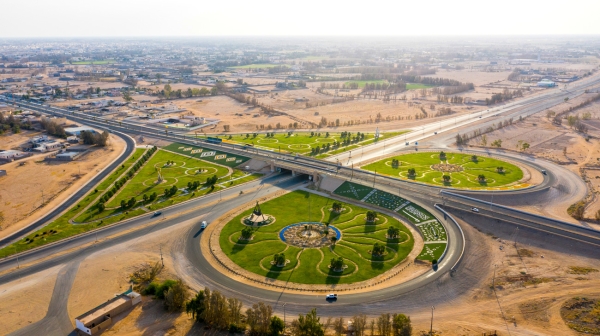
Tabarjal Governorate (romanized: Muḥāfad͟hat Ṯubarjal) is one of the Category (B) governorates of al-Jawf Province, in the north of the Kingdom of Saudi Arabia. It is located on the Saudi-Jordanian border, specifically 228 km to the east of the emirate’s headquarters in the city of Sakaka. It is bordered by al-Qurayyat Governorate to the north, Tabuk Province to the west and southwest, Dawmat al-Jandal Governorate to the southeast, and Sakaka Governorate to the east.
Tabarjal Governorate population
Tabarjal is the second smallest governorate in terms of population in the province, following Dawmat al-Jandal Governorate, which has a population of 54,341 people. Given the administrative division of al-Jawf Province, which divides the province into only four governorates, 18.4 percent of the province's population resides in the governorate, estimated at 109,796 people according to the 2022 Saudi Census.
Tabarjal Governorate includes six administrative centers. They are: Mayqu Center, an-Nabk Abu Qasr Center, al-Busayta Center, Thaniyah Umm Nakhilah Center, al-Thaniyah Center, and al-Subayhah Center.
Development in Tabarjal Governorate
Residents and visitors of Tabarjal Governorate utilize al-Jawf International Airport, situated in the city of Sakaka, as the nearest airport to the governorate. This airport is approximately 218 km away and operates as an international airport with an annual passenger capacity of approximately two million.
Highway sixty-five passes through Tabarjal Governorate. It begins near Howtat Bani Tamim in Riyadh Province, located in the center of the Kingdom, and extends to al-Qurayyat Governorate in the north. It serves as the main land transportation center for arrival and travel to and from Tabarjal.
To enhance the development of the government’s electronic programs, in 2022, the electronic transaction system was launched in the governorate as part of the emirate’s digital transformation system. This contributes to the speedy exchange of correspondence and transactions by establishing electronic connectivity between the governorate and the emirate of the province. Furthermore, it offers various technical services, such as video calling and direct communication.
Jouf University in Tabarjal Governorate
Tabarjal Governorate is home to the College of Science and Arts affiliated with Jouf University, which commenced teaching in 2012/2013. Its academic plans keep pace with the demands of the modern era, are compatible with curricula in distinguished international universities, and align with the requirements of the labor market in the Kingdom. It comprises six scientific departments: the Arabic Language Department (male and female students), the Mathematics Department (male and female students), the English Language Department (male and female students), the Business Management Department (male students), the Physics Department (male and female students), and the Computer Science Department (male and female students).
Agriculture in Tabarjal Governorate
Tabarjal Governorate is distinguished for its agricultural products, the most important of which are fruits such as grapes, figs, peaches, apricots, pears, pomegranates, and other agricultural products. The Busayta Agricultural Center leads the agricultural regions in the Middle East in terms of abundance of agricultural production, making it one of the most important sources of agricultural products in the Arab world.
According to statistics issued by the office of the Ministry of Environment, Water, and Agriculture in the governorate, the number of fruit trees has reached 707,850 trees. These trees include grape, peach, fig, plum, pistachio, almond, apricot, flat peach, and pomegranates, producing 6,500 t annually. This production is distributed between over 3,127 t of grapes from 212,860 trees, 864 t of peaches from 229,300 trees, 670 t of flat peaches from 33,200 trees each year, 200 t of apricots from 19,000 trees each year, 47 t of plums across 10,200 trees each year, 165 t of figs from 7,050 trees, 114 t of almonds from 132,800 trees each year, 114 t of pomegranates from 4,020 trees each year, and 150 t of pistachios from 22,000 trees, 50 percent of which is in the production stage.
Related quizzes
Related articles


